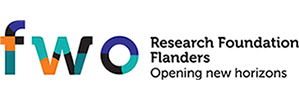The development of supporting tools for planning, analysis and following-up of the drug efficacy and the spread of anthelmintic resistance
Scope
In this work package, we will (i) expand an existing online tool that allows soil-transmitted helminth (STH) program managers to identify the most cost-effective survey design (ParaDesign), (ii) develop a new online tool that generates standardized reports of drug efficacy data (ParaDrug), and (iii) establish an open access data base for drug efficacy and anthelmintic resistance (AR) data as well as STH materials.
1. ParaDesign: tool to identify the most cost-effective survey
ParaDesign is an online tool that provides the required sample size for a specific epidemiological scenarios and diagnostic strategy. At present, the underlying mathematical model still disregards any clustering of infections between schools and the variation in drug efficacy between both individuals and schools. To account for these additional sources of variation, we will further expand the underlying mathematical framework and update the online tool. In addition, we will link the costs to each of the potential survey designs, allowing the user to select the design that meets the local resources. The costs will be based on the literature and data generated during work packages 1 and 2.
2. ParaDrug: tool to analyze and report drug efficacy data
Although there are many studies in literature reporting drug efficacy of albendazole or mebendazole, a direct comparison of these studies is often impossible due to methodological variations. As a response to this lack of standardization, the World Health Organization has worked out guidelines on how to best assess the efficacy of drugs. ParaDrug will support program managers with the analysis, interpretation and reporting of drug efficacy data obtained without the need of any prior knowledge on statistical software.
3. Open access data base
We will collect all drug efficacy and AR polymorphisms data in an open access database that eventually will allow program managers, health-care decision makers and researchers to see how drug efficacy is changing and how AR is spreading over time in geographical areas of interest. This will help to identify areas in which drug efficacy and polymorphism need to be evaluated.




